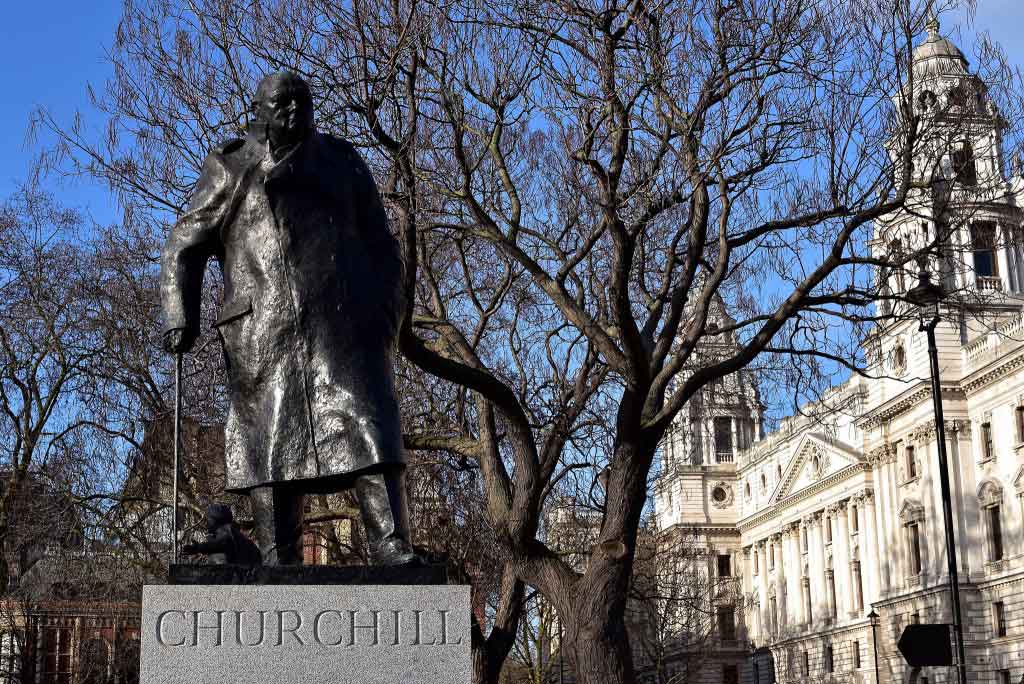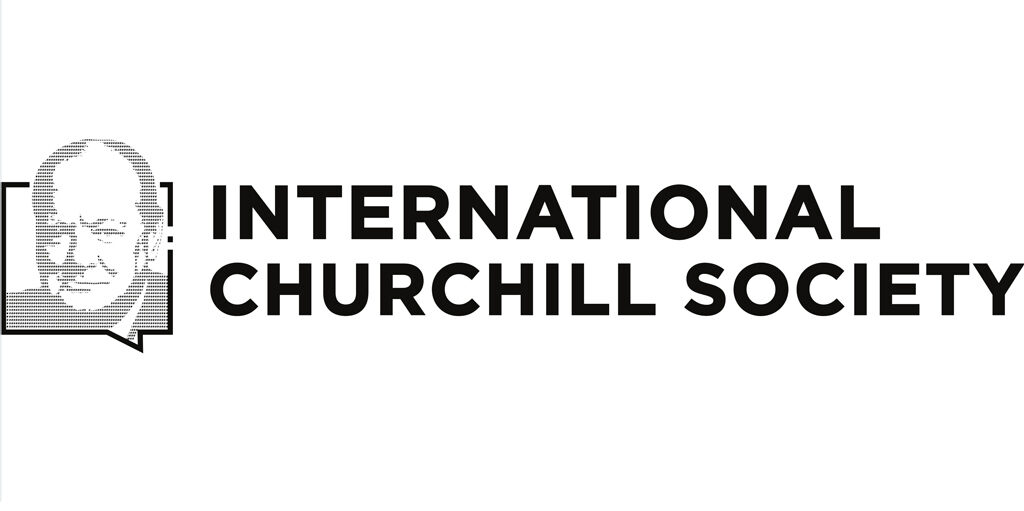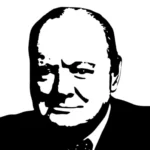
Finest Hour 131
Books, Arts & Curiosities – Worth Reading Despite the Howlers

Winston Churchill, Parliament Square, London © Sue Lowry & Magellan PR
March 28, 2015
Finest Hour 131, Summer 2006
Page 41
By Daniel N. Myers
One Christmas in Washington: The Secret Meeting Between Roosevelt and Churchill that Changed the World, by David Bercuson & Holger Herwig, Woodstock & New York: The Overlook Press, 320 pp, illus., $29.95, member price $23.95.
Anyone who has read many books about Winston Churchill knows that they can be categorized by periods. There was the hagiographic era, during his lifetime and shortly thereafter; and the revisionist period of the 1990s. Now we are in what might be called the reality period. To paraphrase John Ramsden, we are now viewing Churchill “in the round,” i.e., warts and all, but with due respect and by placing the warts within the context of a life that was full of adventure and activism; and a character that never shrank from making hard decisions.
Within this context a pair of Canadians have filled in the gaps on one of the most important conferences of World War II—indeed, the first wartime conference between Churchill and Roosevelt—although I question the subtitle adjective “secret” (it was anything but), or whether it “changed the world.” Nonetheless, Bercuson and Herwig, two professors from the University of Calgary, have written an engaging, insightful, and detailed account that captures the flavor and color of the 1941 Washington conference, code-named “Arcadia,” only days after the Japanese attack on Pearl Harbor. They present an unvarnished picture of Churchill’s objectives and strategy for accomplishing them, revealing the man in all of his charm, strength, and inherent biases. More is the pity that the book is so replete with typos and errors!

2025 International Churchill Conference
It is disconcerting to be enjoying a good read only to stumble upon a glaring typographical or editorial error. Your eyes jump and your reading halts in mid-sentence, much like hitting a speed bump on a superhighway.
We are told that Churchill met Roosevelt in Newfoundland on “Saturday, August 9” (24); three pages later we read, “Sunday morning, August 9.” (The first entry is correct.) And: “For Admiral King, it was a reminder of both the closeness of the war and how unpreparedness [sic] of the United States” (36). Or: “Even though Churchill grew to maturity in the a British upper class…” (76). The Battle of Tripoli is dated 1904; it was 1804. The errors multiply with such rapidity as to make one wonder whether it is worth continuing. (It is.)
Professor Christopher Sterling of George Washington University kindly sent me a list of “howlers.” They include the old canard about Lord Randolph and syphilis (63). Sir Winston believed this caused his father’s death, but it has been long since disproven and good historians know so. The writers mistakenly claim that WSC won the Nobel Prize for Literature for The Second World War (69); that daughter Marigold was born in 1922 and died in “finfancy” (75); that Churchill returned to the Admiralty in September 1940 (81); that Eden left Chamberlain’s cabinet in 1940 (95). The Blue Room in the White House is identified in a photo as being converted after the war to “the current Oval Office”; but the Oval Office dates at least to President Hoover and is in the West Wing, as any viewer of modern television dramas will know.
There are enough clunkers to take up this whole review; the art of editing seems lost. Why then do I recommend the book? Because it tells a fascinating story in detail and represents a major contribution to the literature of this important period.
Particularly engaging are the vignettes on key people. Chapters (replete with errors) cover Churchill and Roosevelt; much better are the thumbnail sketches of major and lesser players including, such as Admiral Sir Dudley Pound, Field Marshal Sir John Dill, Air Marshal Sir Charles Portal, Henry L. Stimson, Harry Hopkins, Cordell Hull, and George C. Marshall.
These vignettes help to make the book, adding a personal touch and providing information beyond the basic story line. Interestingly, the character who stands out is Marshall. With all of the egos and grandees on both sides, the authors credit Marshall with “clear vision and concentrated focus.” He embodied “Churchill’s greatest hope for a combined war effort and his greatest fear of the United States striking out alone.”
The writers cover the full period of Churchill’s visit, including his side trips to Canada and Florida. We meet William Lyon Mackenzie King, Canadian Prime Minister, with a brief look at that relationship. (See FH 130 for the full story. —Ed.) Curiously, these two Canadian writers overlook the famous, and not uninteresting, story of the Yousuf Karsh photos in Ottawa, the most famous images of Churchill. Instead, we are told of the PM’s “Some Chicken! Some Neck!” speech, received amid a chorus of desk banging by members of the Canadian Parliament, followed by a “brief press conference.” How could they miss telling the fascinating story of how Karsh captured the face of bulldog determination with his camera?
On the plus side, the authors treat us to the story of the Gaullists’ seizure of the Vichy French islands of Saint-Pierre and Miquelon, off the coast of Newfoundland, in December 1941. This minor incident makes for an intriguing side story and is not widely reported in the Churchill canon. The tensions it created between the British and Americans, particularly between Churchill (who praised the Gaullists in his speech in Ottawa) and Cordell Hull (who was furious for this diplomatic contretemps) is an undercurrent that runs through the second half of the book. This is a story that has not been fully told but which serves as a backdrop to the major discussions that were taking place.
If you can steel yourself to ignore the many printing and editing gaffes, this book is well worth the reading for any student of Churchill and the British-American wartime coalition.
Mr. Myers is Executive Director of The Churchill Centre in Washington, D.C.
Subscribe
WANT MORE?
Get the Churchill Bulletin delivered to your inbox once a month.



